Are you considering a translation service to bridge language barriers for your business or personal needs? Finding the right provider is essential to ensure accuracy and understanding in every document. In this article, we'll guide you on how to create a compelling letter that effectively requests a quote for translation services, helping you navigate this important step. Ready to enhance your communication? Keep reading for tips and a sample letter you can customize!
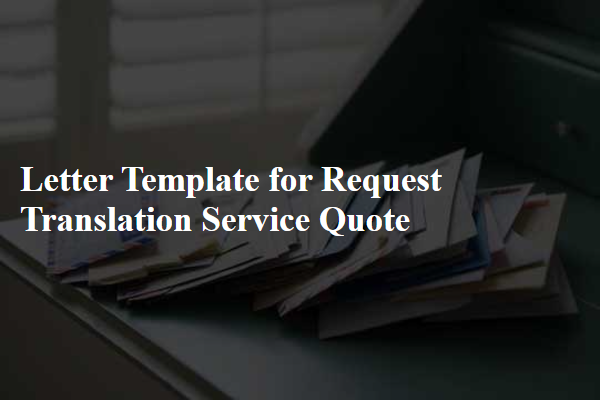
Clear Description of Translation Needs
A clear description of translation needs is essential for obtaining an accurate quote from translation service providers. Specify the source language (e.g., Spanish, Mandarin) and target language (e.g., English, French) to establish language pairing. Include details about the document type, such as technical manuals, legal contracts, or marketing materials, as these genres have varying complexities. Indicate the total word count or page count, as this impacts the pricing structure. Highlight any specialized terminology or industry jargon relevant to fields like medicine, technology, or finance that may require subject-matter expertise. Specify timeline requirements for project completion, noting any urgency or deadlines. Providing context on the intent of the translation, such as for formal publication or internal use, may also influence the level of detail necessary for the service provider's response.
Source and Target Languages
Requesting a translation service quote involves specifying key details to ensure clarity and accuracy. For source languages (the original language requiring translation)--such as Spanish, French, or Chinese--provide context about the type of documents or content involved. For target languages (the desired language for translation) such as English, German, or Arabic, indicate any specific dialects or regional variations needed. Include substantial content metrics: document length (number of words or pages), formatting complexity, and any specialized terminology relevant to the subject matter, like legal or technical jargon. Mention desired turnaround time--ranging from standard service (usually 3-5 business days) to expedited options (as quickly as 24 hours). Notation of potential additional services--like proofreading, desktop publishing, or certification--can also affect the quote.
Volume and Format of the Content
Volume and format specifications for translation services play a crucial role in determining pricing and timelines. Typical content volume ranges from single documents (up to 500 words for short articles) to extensive projects exceeding 10,000 words for entire reports or books. Common formats include Microsoft Word (compatible with .docx for easy editing), PDF (often requiring OCR for text extraction), and HTML files (used for web content). Having clarity on content subject matter, such as technical manuals or marketing materials, influences translator expertise and ultimately affects the quote. Additionally, specific languages, such as Spanish or Mandarin, may vary in translation difficulty and cost based on demand and availability of translators.
Deadline and Delivery Requirements
In translation services, clarity in communication is essential for meeting project deadlines and delivery requirements. A translation project may involve converting documents from a source language, such as Spanish, to a target language, like English. Timelines can vary, with urgent requests typically requiring completion within 24 hours, while standard projects may take several days or weeks depending on length and complexity. Specific delivery formats can also be critical; for instance, businesses often require translations in editable formats (e.g., Microsoft Word or Google Docs) for easier integration into existing materials. Clear deadlines and precise delivery expectations enhance overall service quality and customer satisfaction.
Company Details and Contact Information
A request for a translation service quote typically includes essential company information, such as company name, address, and contact details. This information should clearly identify the organization requesting the service, including specific aspects like the nature of the business, language pairs needed (for example, English to Spanish), and intended use for the translated material (such as legal documents or marketing materials). Important contact information includes the name of the primary contact person, their job title, email address, and phone number, facilitating smooth communication regarding project scope and pricing. Additionally, providing a brief description of the documents or content to be translated helps potential service providers assess requirements more accurately.
Letter Template For Request Translation Service Quote Samples
Letter template of request for a quote on language translation services.
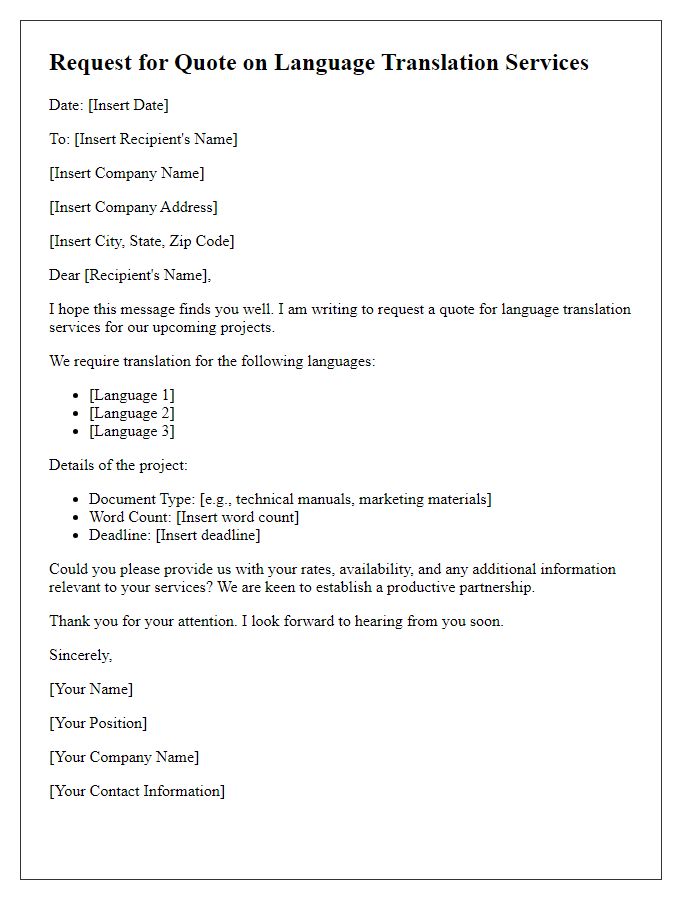
Letter template of proposal for obtaining translation service estimates.
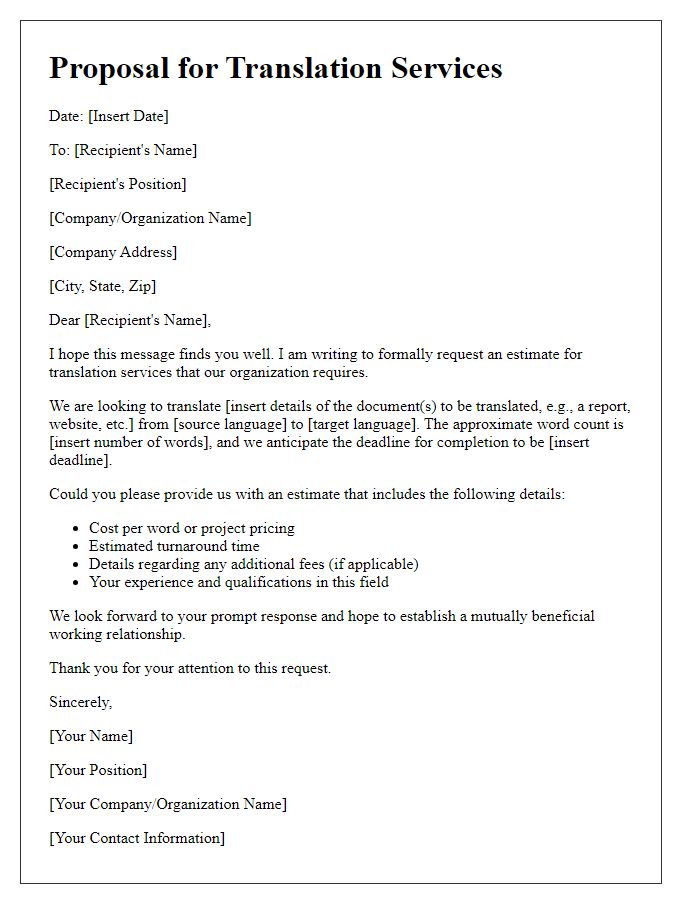
Letter template of solicitation for pricing details on translation services.
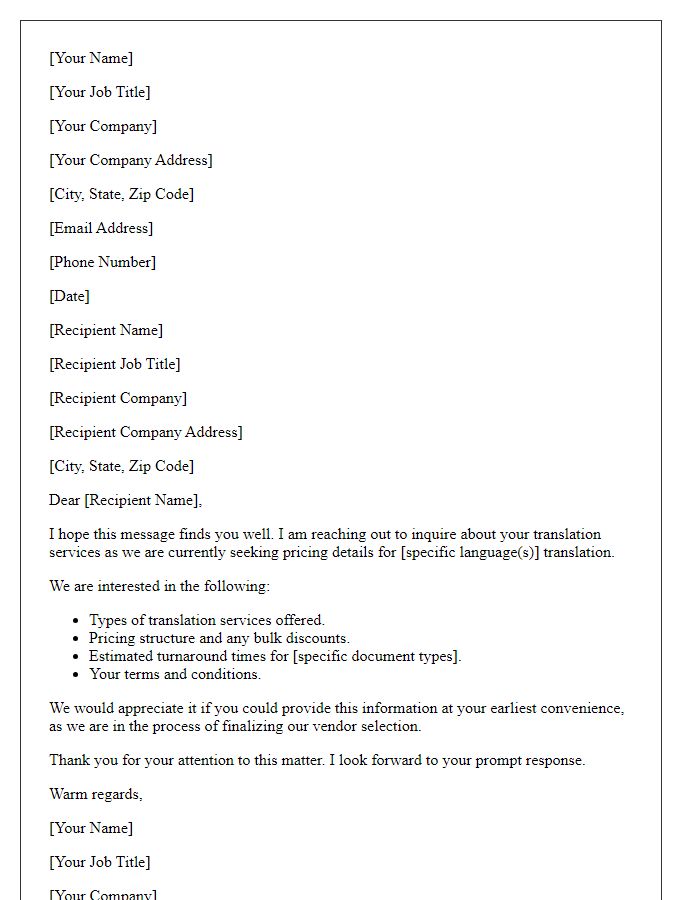
Letter template of appeal for a translation quote for multiple languages.

Letter template of request for pricing information on professional translation.
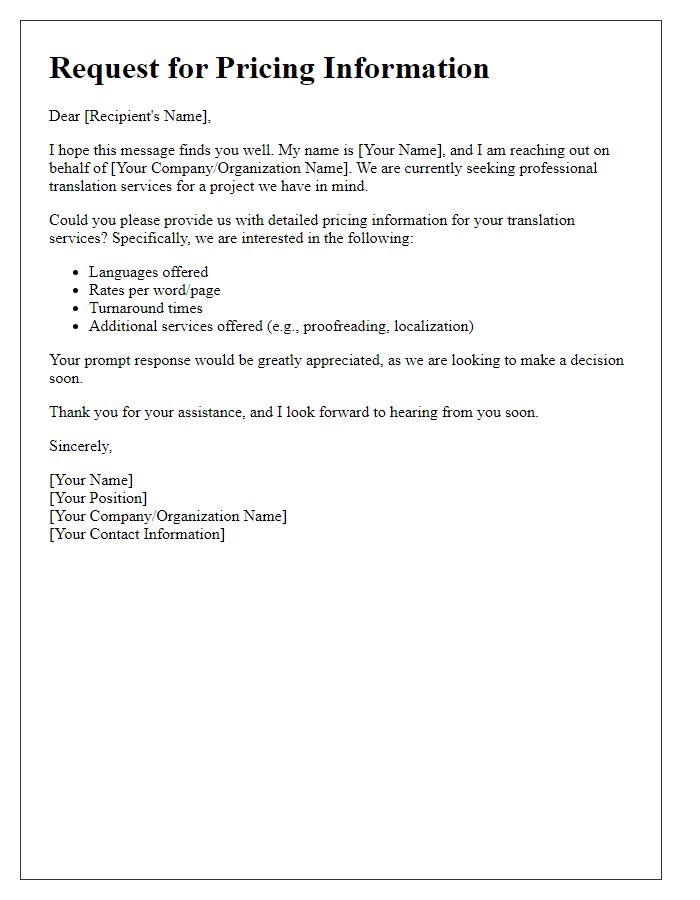
Letter template of communication for translation services quote request.
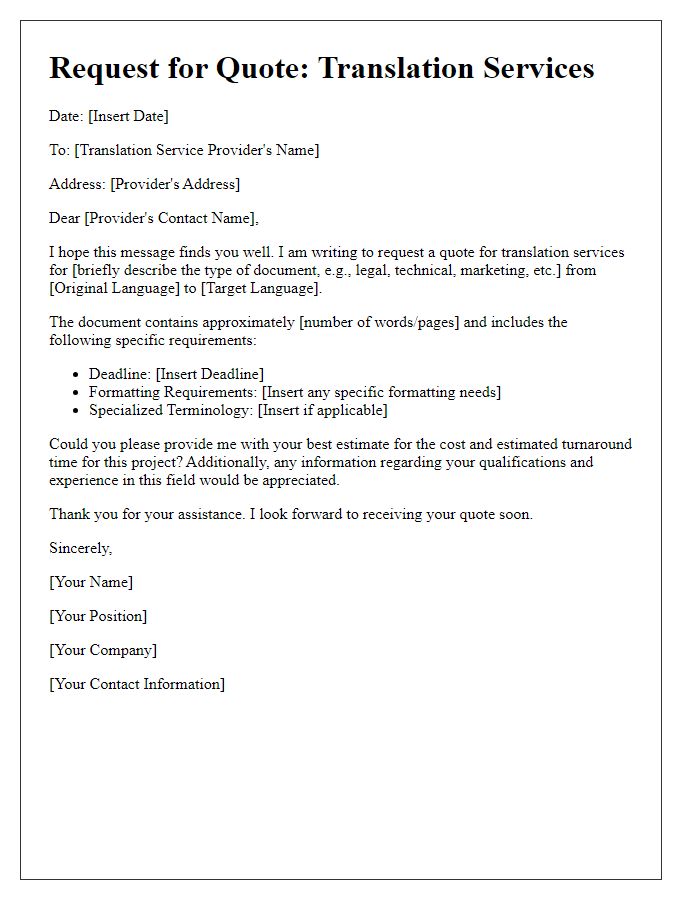
Letter template of application for a detailed quote on translation services.
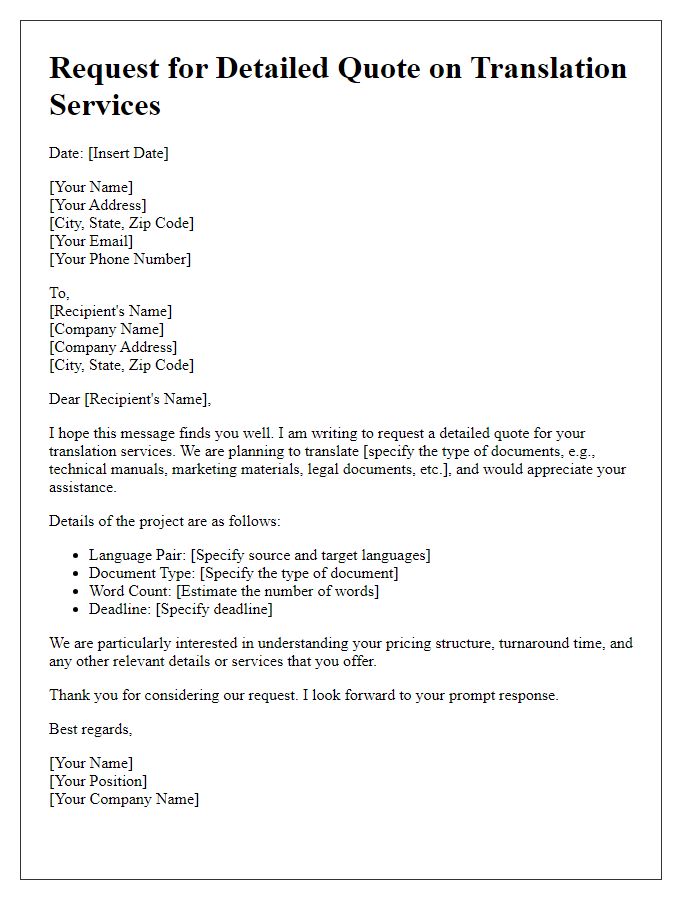

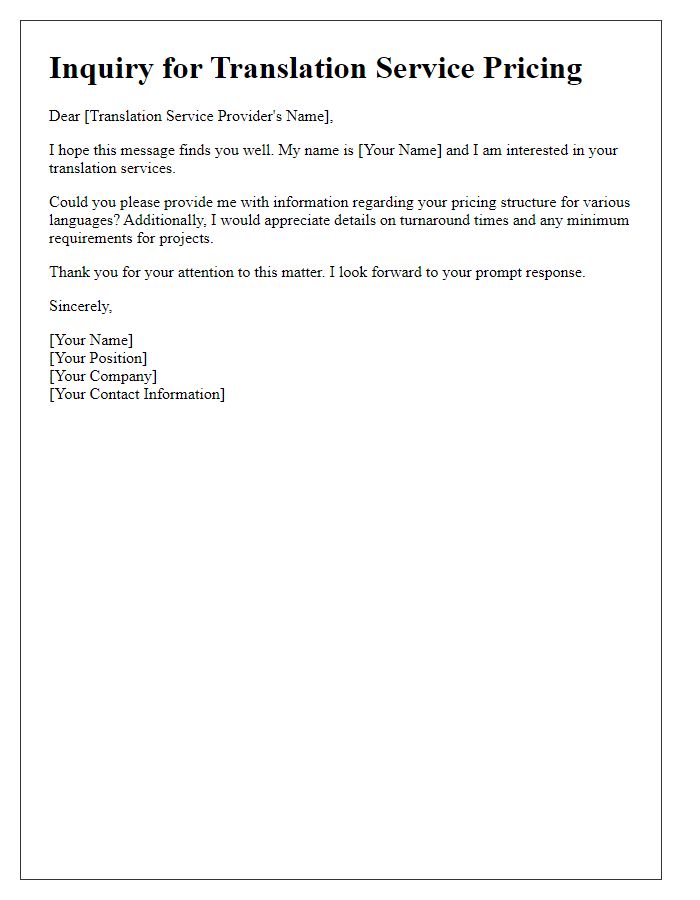
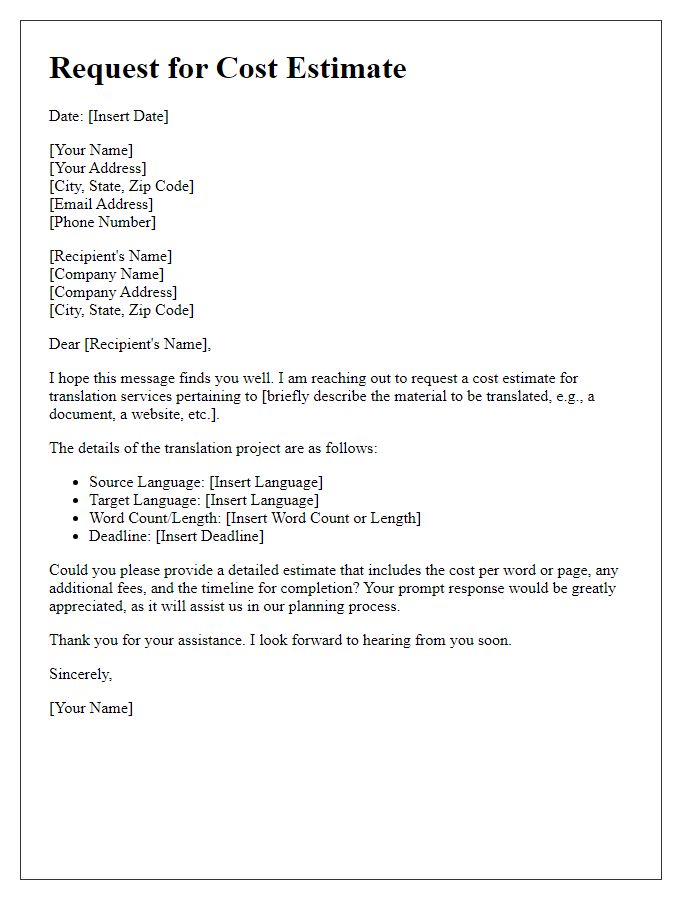
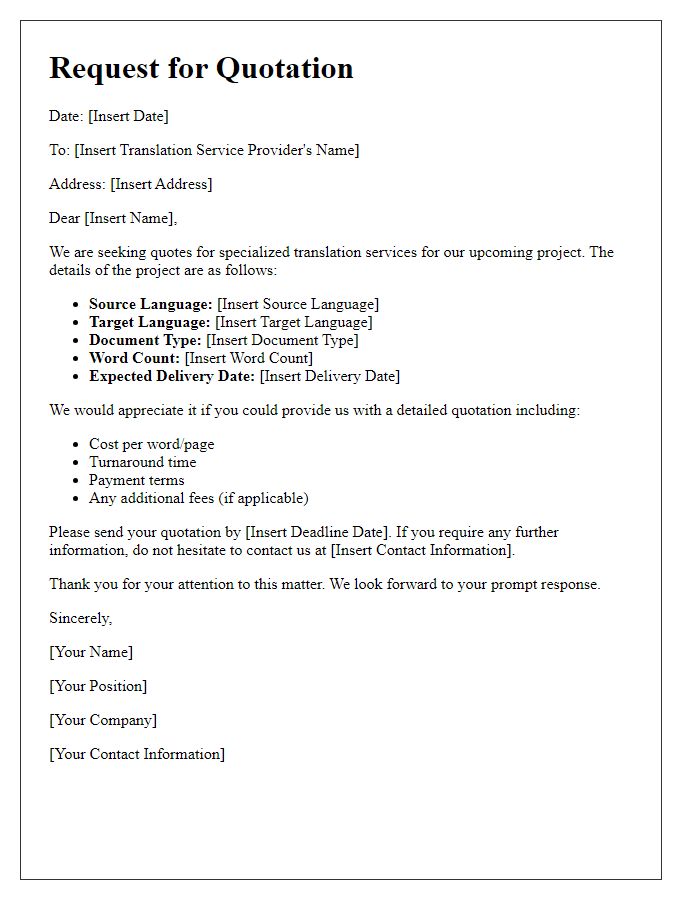


Comments